This article was medically reviewed by Erik Kramer, DO, MPH. Dr. Erik Kramer is a Board-Certified Primary Care Physician at the University of Colorado. With over 15 years of experience, his clinical interests include obesity and weight management, diabetes care, and preventive care, as well as embracing a holistic approach to primary care. He received his Doctorate in Osteopathic Medicine (D.O.) from the Touro University Nevada College of Osteopathic Medicine and completed his residency at Central Maine Medical Center. Dr. Kramer is a Diplomate of the American Board of Obesity Medicine.
There are 8 references cited in this article, which can be found at the bottom of the page.
This article has been viewed 73,348 times.
Swelling after surgery is quite common and usually nothing to worry about. However, it can be uncomfortable. Try different techniques for reducing your swelling. Follow your doctor’s instructions for aftercare first and foremost including contacting them if you have concerns about the swelling. You can also try post-surgical exercises for your legs and arms if you have been cleared to do so. Also, make sure to take precautions to prevent infections, which could lead to swelling or make normal post-surgical swelling worse.
Steps
Following Basic Aftercare Protocols
-
1Elevate your affected leg or arm above the level of your heart. While you are sitting or lying down, use pillows to keep your arm, leg, foot, or hand above the level of your heart. Place 1 to 2 pillows on a bed or sofa and rest your affected leg or arm on them to keep it above the level of your heart.[1]
- You can also elevate your legs while seated in a reclining chair. Place a couple of pillows on the footrest to support your feet and legs.
- If you had hand surgery, keep your hand above the level of your heart, such as up near your shoulder while you’re sitting, walking, or standing.[2]
-
2Apply an ice pack for 10 to 20 minutes every 1 to 2 hours. Icing your surgical site will reduce swelling and increase your comfort by numbing the area slightly. Never apply ice to bare skin. Cover the ice pack with a thin cloth towel or paper towel and place it on the swollen area. Hold it there for 10 to 20 minutes. Then, remove it and allow your skin to return to its normal temperature before icing it again.[3]
- Wait at least 1 hour before icing your skin again to reduce the risk of frostbite or skin damage.
- If you don’t have an ice pack handy, a bag of frozen corn or peas will also work. Wrap it in a paper towel and apply it to your wound.
- Make sure to put your ice pack right back into the freezer after you’re finished with it so that it will be ready the next time you need it.
Advertisement -
3Wear compression stockings to reduce swelling in your legs. If you had surgery on your leg or hip, then you may notice swelling throughout 1 or both legs. This is often considered normal, but wearing compression stockings may help to reduce swelling and increase your comfort. Pull the compression stockings up and over your feet. Then, pull them up as high as they will go.[4]
- Avoid wearing compression stockings over an incision wound unless it’s completely healed or your doctor tells you it’s okay.
- Most compression stockings only go up to your knees, but you can get compression stockings that go higher if you prefer.
- Your doctor may recommend wearing compression stockings following your surgery. If not, ask them if compression stockings might help. You can purchase compression stockings without a prescription online or in a drug store.
-
4Call your doctor if you notice any signs of an infection. It’s important to watch for signs of an infection following surgery, and in some cases, swelling may indicate an infection. Call your doctor if you notice swelling along with any of the following symptoms:[5]
- Redness
- Heat around the swollen area
- Pain
- Pus draining from the surgical site
- A bad smell coming from the wound
- A fever or chills
Warning: Seek immediate medical attention if you have a sudden onset of swelling or if your swelling is severe. These may be signs of a blood clot.[6]
Using Exercises to Decrease Swelling
-
1Get clearance from your doctor before you start doing exercises. If you have had a surgery where doing exercises may be helpful for your recovery, your doctor will likely tell you this. However, you can always ask if you are unsure. It’s important to check with your doctor to see if exercising is okay following your surgery, or find out if you will need to wait for a while.[7]
- For example, if you have had a knee or hip replacement surgery, then your doctor may advise you to avoid certain types of movements, such as squatting or bending forward. But other types of gentle exercise may be beneficial, such as doing ankle pumps while lying down.
-
2Do arm exercises if you have had a mastectomy or lymph node surgery. While lying or sitting, raise your arm above the level of your heart and hold it there. Then, open and close your hand 15 to 25 times while continuing to hold your arm up. This will help to promote drainage from your lymph nodes and reduce the swelling.[8]
- One set is 15 to 25 hand openings and closings. Do 2 to 3 sets twice daily. You can keep your arm up in the air in between sets to continue to promote drainage.
-
3Do ankle pumps and circles if you had hip or knee surgery. Lie flat on your back in a bed or on a sofa and prop up your legs and feet on pillows so that your legs are above the level of your heart. Flex your feet in towards your heart and then point them down and away from your body to do 1 repetition. Repeat this 15 to 25 times to complete 1 set. After that, rotate each of your ankles as if you are drawing a circle with your toes. Repeat this exercise 15 to 25 times to complete 1 set.[9]
- Do 2 to 3 sets of ankle pumps and ankle circles for each foot. Repeat this twice daily to help promote drainage in your legs.
Tip: It’s best to perform these exercises within the first 3 to 7 days after surgery, but make sure to check with your doctor first.
-
4Resume your usual daily activities only when you are cleared to do so. Take it slow to avoid overexerting yourself after surgery. Ask your doctor when you can do certain things, such as lifting heavy objects, exercising at the gym, and doing household chores. The timeline for resuming your normal activities will vary depending on the type of surgery you had and how quickly you are healing.[10]
- For example, your doctor may clear you to walk with a walker within a few days after a hip surgery. However, you might not be able to walk long distances or go very quickly for a few weeks.
Preventing Swelling
-
1Protect your skin to prevent infections when you are doing chores. Getting a cut or burn on your skin could predispose you to an infection after surgery and this could lead to swelling. Wear a pair of rubber gloves when you do cleaning chores, and a pair of thick work gloves when you do other household chores, such as yard work. Be cautious when cutting vegetables or meat in the kitchen, and don’t stand too close to your stove while cooking to avoid oil splatter.[11]
- Make sure to wash your hands regularly as well. It is especially important to wash your hands before and after caring for your surgical site since dirty hands can introduce bacteria that may lead to an infection and cause swelling.
-
2Put on sunscreen and bug repellent when you go outside. Sunburns and bug bites can increase your risk of a skin infection, which may lead to swelling. Wear an SPF 30 or higher sunscreen whenever you go outside and put on bug repellent to protect yourself from bug bites.[12]
- You can also wear a wide-brimmed hat to protect your scalp and face from the sun.
- Burn a citronella candle near where you will be sitting outside to help keep mosquitoes and other bugs away.
-
3Avoid any blood draws or injections in the first few weeks after surgery. Puncturing your skin with a needle may increase the risk of infection near your surgical site. If you had surgery on your arm, then make sure that you avoid any blood draws or injections unless it is absolutely necessary.[13]
- Use caution when you shave as well! Use an electric razor instead of a razor blade and do not use a hair-removal cream.[14]
Tip: It’s also a good idea to wear a thimble if you have to use a needle and thread, such as to mend a pair of pants.
-
4Wear loose-fitting clothing that allows your skin to breathe. This will help to prevent swelling by allowing your blood to circulate freely under your skin. Opt for loose-fitting pants, skirts, tops, and undergarments while you are recovering from surgery.[15]
- The only exception to this would be if you have been instructed to wear a compression garment by your doctor. In this case, a constricting medical piece of clothing will help to reduce swelling rather than promote it.
-
5Don’t smoke or drink alcohol. Not only will smoking and drinking impede your healing after surgery, but they will also affect your circulation and this may contribute to swelling. Try to quit smoking if you are a smoker and cut back or quit drinking if you drink alcohol regularly.[16]
- Certain medications may also interact poorly with alcohol, such as antibiotics and painkillers. Check with your doctor or pharmacist if you’re unsure.
Warnings
- If you have any concerns about your swelling, the best strategy is to talk to your healthcare provider. Don’t wait to address the problem or it may get worse.⧼thumbs_response⧽
References
- ↑ https://orthoinfo.aaos.org/en/recovery/activities-after-hip-replacement/
- ↑ https://www.nhs.uk/conditions/hand-tendon-repair/recovery/
- ↑ https://www.healthlinkbc.ca/health-topics/hw170381
- ↑ https://orthoinfo.aaos.org/en/recovery/activities-after-hip-replacement/
- ↑ https://medlineplus.gov/ency/article/007645.htm
- ↑ https://orthoinfo.aaos.org/en/recovery/activities-after-hip-replacement/
- ↑ https://www.cancer.org/cancer/breast-cancer/treatment/surgery-for-breast-cancer/exercises-after-breast-cancer-surgery.html
- ↑ https://www.cancer.org/cancer/breast-cancer/treatment/surgery-for-breast-cancer/exercises-after-breast-cancer-surgery.html
- ↑ https://www.allinahealth.org/health-conditions-and-treatments/health-library/patient-education/total-knee-replacement/after-surgery/knee-exercises
- ↑ https://www.allinahealth.org/health-conditions-and-treatments/health-library/patient-education/total-knee-replacement/after-surgery/knee-exercises
- ↑ https://uihc.org/health-topics/preventing-arm-swelling-after-breast-cancer-surgery-and-radiation
- ↑ https://www.mskcc.org/cancer-care/patient-education/hand-and-arm-care-after-removal-axillary-lymph-nodes
- ↑ https://uihc.org/health-topics/preventing-arm-swelling-after-breast-cancer-surgery-and-radiation
- ↑ https://www.mskcc.org/cancer-care/patient-education/hand-and-arm-care-after-removal-axillary-lymph-nodes
- ↑ https://uihc.org/health-topics/preventing-arm-swelling-after-breast-cancer-surgery-and-radiation
- ↑ https://uihc.org/health-topics/preventing-arm-swelling-after-breast-cancer-surgery-and-radiation
About This Article
A little swelling is normal after surgery, but you can minimize it with a few simple aftercare techniques. If you had surgery on an arm or leg, keep the limb elevated above your heart as much as possible while you recover. Applying an ice pack for 20 minutes every 1 to 2 hours can also reduce swelling and pain. Always wrap the ice pack in a cloth or towel so it doesn’t irritate your skin. Compression can help push fluids out of the area, so ask your doctor about wearing a compression bandage or sock on a swollen limb. While some swelling is to be expected, severe swelling, redness, heat, or worsening pain around the incision can be signs of an infection. Call your doctor right away if you notice any of these symptoms. For more expert tips, such as how to decrease swelling with gentle exercise, scroll down!

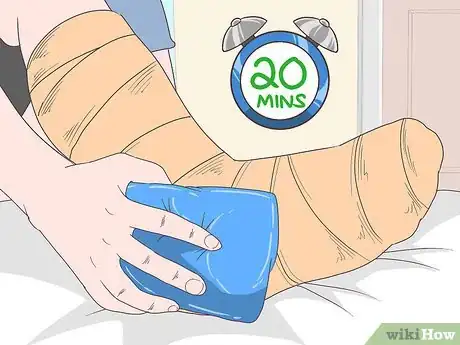



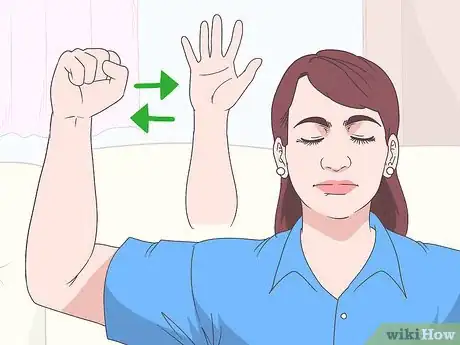




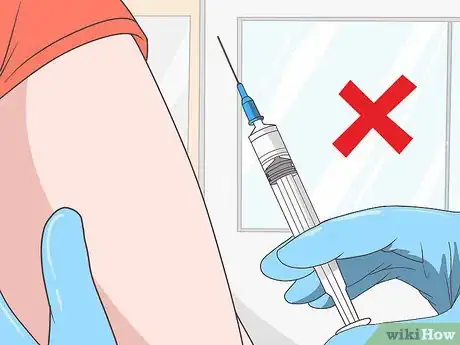




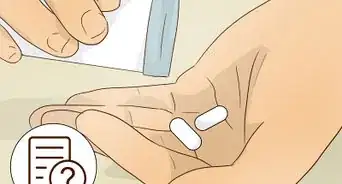




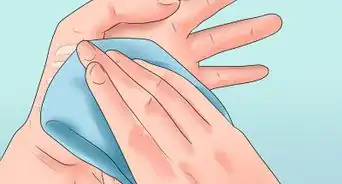















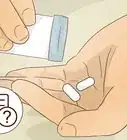




































Medical Disclaimer
The content of this article is not intended to be a substitute for professional medical advice, examination, diagnosis, or treatment. You should always contact your doctor or other qualified healthcare professional before starting, changing, or stopping any kind of health treatment.
Read More...